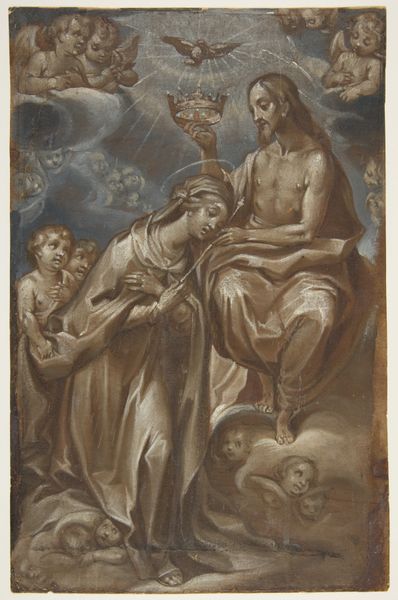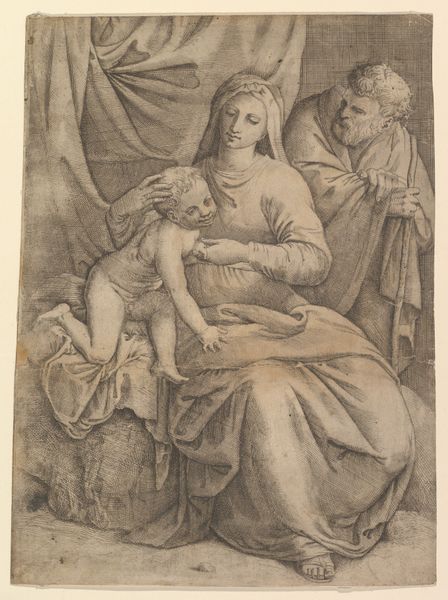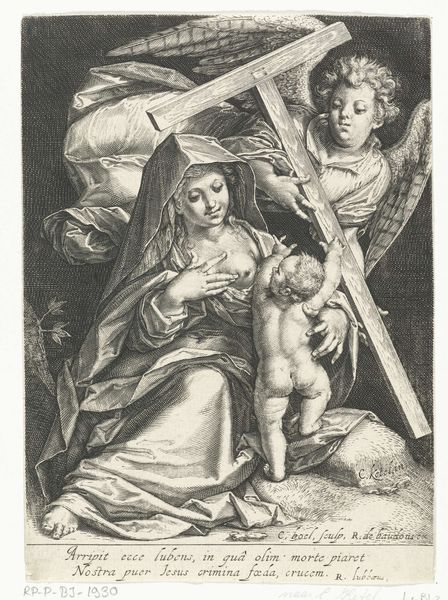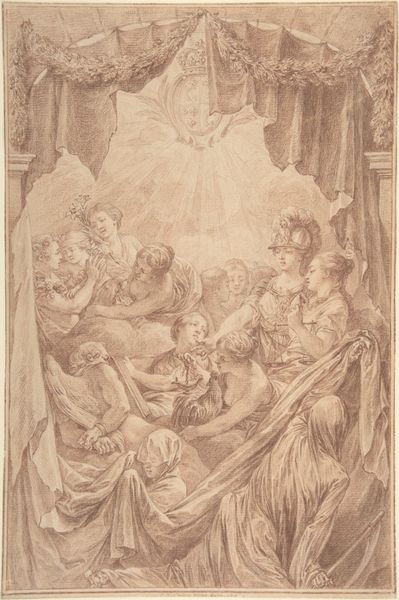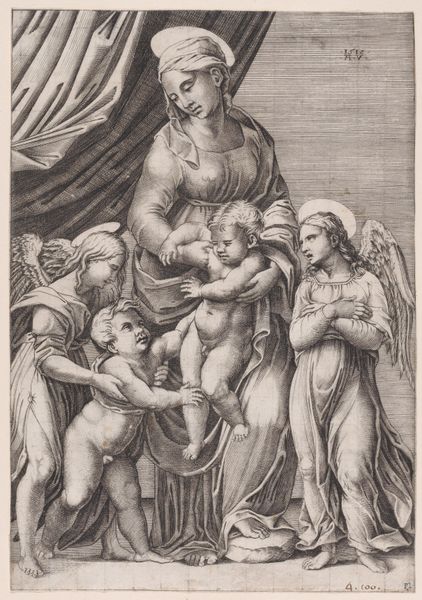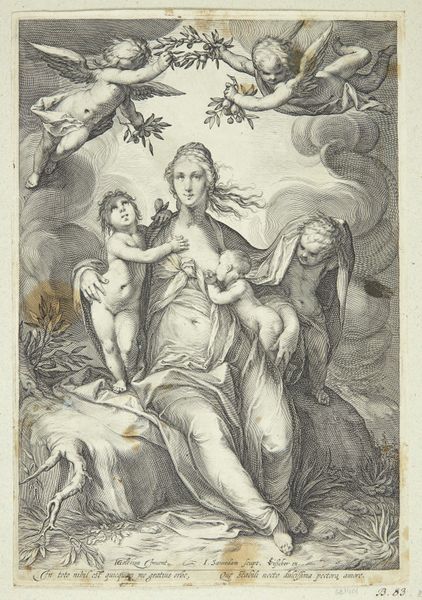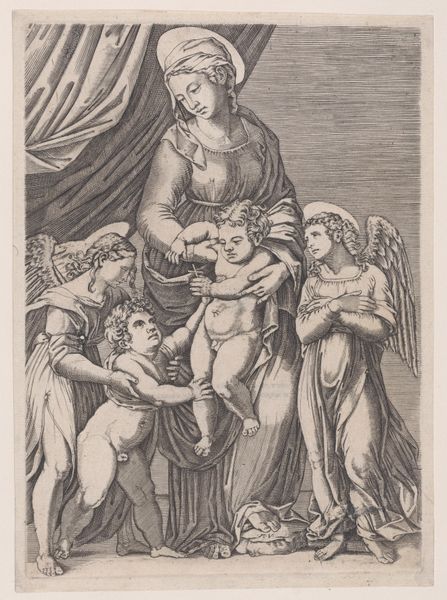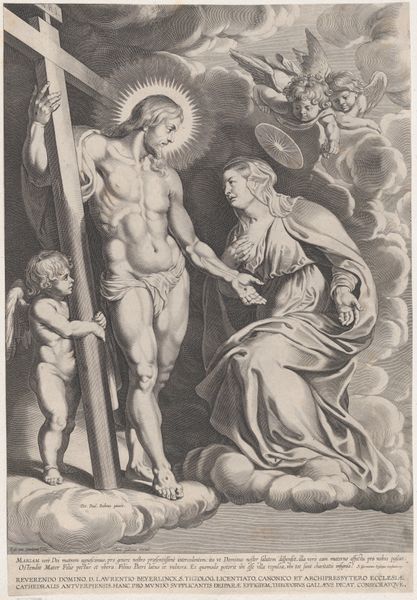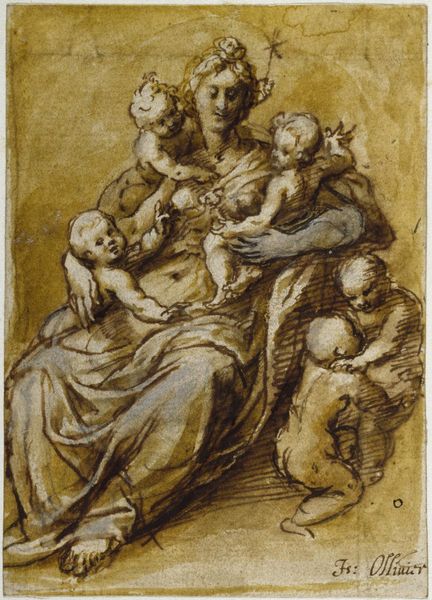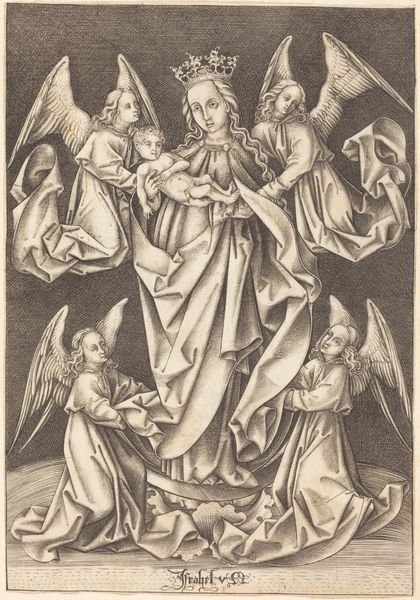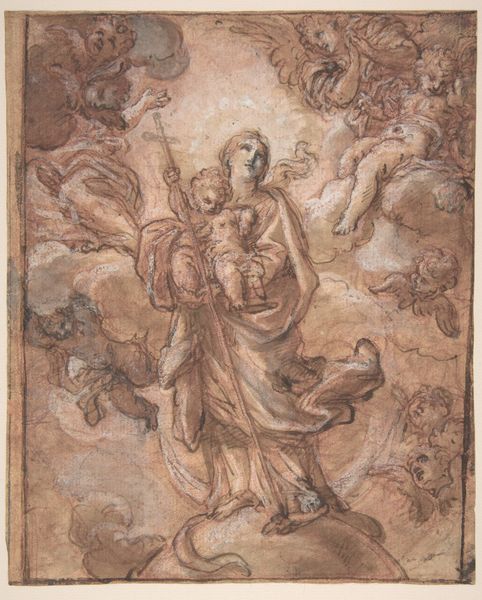
watercolor
#
baroque
#
charcoal drawing
#
figuration
#
oil painting
#
watercolor
#
history-painting
#
watercolor
Dimensions: height 224 mm, width 183 mm
Copyright: Rijks Museum: Open Domain
Editor: This is Jacques Jordaens' "De Gerechtigheid, zittend tussen Geloof en Liefde," from 1643-1647, currently residing at the Rijksmuseum. It's a watercolor, and there's something almost dreamlike about its figures. What do you see in this piece? Curator: What I see is a visual argument deeply embedded in the political and religious climate of 17th-century Flanders. Jordaens uses allegory – Justice flanked by Faith and Charity – to comment on societal values. Look at how Justice, often depicted as stern, is softened by the nurturing presence of the other two virtues. What does that juxtaposition suggest to you about the era's anxieties regarding power and social responsibility? Editor: It’s interesting that you mention the softening. Justice is usually such a severe figure, but here, even with the sword and scales, she seems almost…approachable. Curator: Exactly. Consider the role of the Catholic Church during that time. Jordaens, while successful, navigated a complex religious landscape. Could this gentler Justice be a subtle critique, perhaps urging for a more compassionate approach from those in authority, both religious and secular? Think about how the figures interact. Is there an intentional effort to balance power with empathy? Editor: That's a compelling idea. The presence of children certainly emphasizes a theme of compassion. I hadn’t thought about it as a commentary on the Church specifically, but it makes sense. Curator: And consider this: Jordaens was a master of representing different social classes in his art. How do you think that social awareness informs his representation of abstract concepts like Justice and Faith? Does he seem to advocate for a specific vision of justice rooted in the material realities of people's lives? Editor: Wow, I'm seeing so much more in this piece now than I did initially. Thank you for illuminating these historical and social contexts. Curator: And thank you for being so open to exploring them. It's through these kinds of dialogues that we can truly unpack the complex layers of meaning embedded within art.
Comments
No comments
Be the first to comment and join the conversation on the ultimate creative platform.
